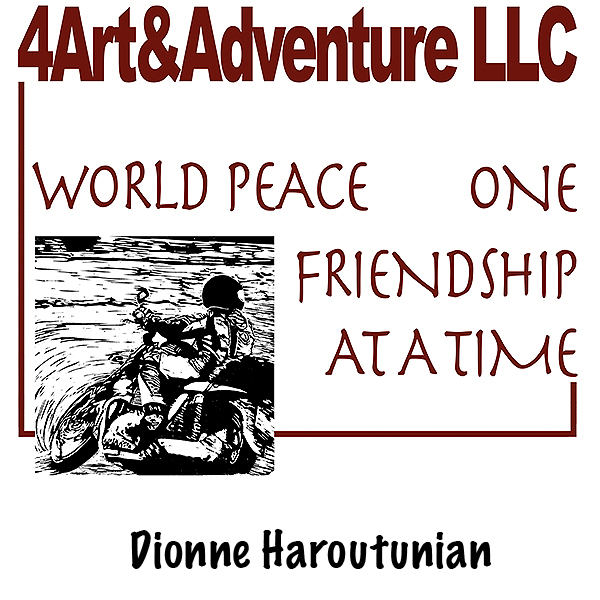On pourrait dire que je ne m'arrêterai à rien pour que Mike puisse visiter une salle d'urgence en Espagne. L’autre jour je ressens soudain une monstre douleur au majeur comme si j'avais une coupure invisible dans l'articulation. Deux jours plus tard, mon doigt est rouge, gonflé et douloureux: une excellente combinaison pour faire de la moto! Comme Mike l'avait deviné, les antibiotiques généraux ne sont pas assez précis et dimanche, je me réveille avec un bras douloureux. Je suis perplexe «quand est-ce que je me suis frappé au bras? »Dans mon demi-sommeil, une pensée « et si, sous ma manche, il y a quelque chose de grave à cause de mon doigt ?? »Je me dirige vers la salle de bain, allume la lumière, jette un coup d'œil dans le miroir. Il DOIT bien y avoir quelque chose d'important à faire maintenant. Maquillage? Peigner mes cheveux? Je n’ai pas possédé de peigne depuis 40 ans. Je pense que je vais me brosser les dents. Pendant très longtemps. Quand j'étais petite, j'ai vu une émission scientifique à la télévision. J'ai appris quelque chose que je n'ai jamais oublié: lorsqu'une infection se propage sous la forme d'une ligne rouge, ALLEZ IMMÉDIATEMENT À L'HÔPITAL! OK, je ne peux plus remettre à plus tard: il est temps de me retrousser les manches. Merde! La voici: sur mon avant-bras, une grande ligne rouge et deux lignes rouges sur le dos de ma main. Huuuuuh ... Mike?! Je pense que nous avons un problème!
Il est 5 heures du mat’ un dimanche pluvieux dans un pays très catholique, au cœur de la vieille ville piétonne de Cordoba, où nous ne savons pas comment trouver un taxi sans internet. Sur les 168 heures de la semaine, j'ai choisi les pires vingt-quatre pour une urgence en Espagne. Nous décidons d’attendre la fin de la première messe et à 9 heures, je saute derrière Mike. Avec un bras autour de lui et l’autre en l'air, nous nous rendons à l’hôpital universitaire Reina Sofía. J'ai toujours beaucoup aimé arriver aux urgences en moto! Je n'ai pas posé beaucoup de questions à Mike. Il a l'air inquiet. Je sais qu’il sait des choses que je ne veux vraiment pas savoir pour le moment. C’est assez qu’il ait mentionné les mots «O.P.». Opération chirurgicale. Des couteaux. Ouvrir. Drainer.
On passe par la première station d’infirmières. Puis on attend. On attend encore. Finalement, mon nom est appelé et nous entrons dans un petit bureau sombre avec un homme en blouse verte derrière un ordinateur et une femme à côté de lui. Il n'a pas de temps à perdre. Il semble agacé par la lenteur de mon espagnol et il coupe simplement la parole à Mike alors que celui-ci tente d'expliquer la situation. Je regrette immédiatement avoir dit que Mike est médecin, c’est évident que ça ne lui plait pas.
Il jette un coup d'œil rapide à mon doigt et se tourne vers son ordinateur pour taper non-stop pendant au moins cinq minutes. S'il a des informations quant à mon état, ça n’a pas l’air de lui venir à l’esprit de les partager. Il se retourne vers moi et sans aucun effort pour parler lentement, il grommelle quelquechose et me tend une ordonnance «au revoir». On a fini?? À contrecœur, il répond à nos questions: oui des antibiotiques puissants pendant sept jours, oui le doigt risque de gonfler beaucoup plus, et si cela se produit, nous devons absolument nous rendre immédiatement à l'hôpital pour qu’ils fassent une “O.P.” Et la pharmacie, on la trouve où? N’importe où. Le dimanche? Il y en a qui sont ouvertes. Au revoir.
Voici un conseil pratique: assurez vous de ne jamais avoir besoin d’une pharmacie le dimanche! Après avoir suivi la liste des pharmacies (fermées) sur notre GPS pendant une heure, on décide d’aller boire un café sur une terrasse accueillante. Alors que nous nous asseyons, tranquilles ... imaginez notre surprise: «Farmacía, 365 días 12 horas». Comme quoi —- c’est toujours dans la relaxation que tout s’arrange!
J'en ai fini avec les antibiotiques. Mon doigt va beaucoup mieux. Plus de lignes rouges. Pas de douleur. Il n’est plus enflé ni engourdi. Par contre, il a l'air tout bizarre! Nous verrons. J'espère que je devrai pas rencontrer l'homme en vert du Maroc.
Rien de mieux pour se remettre sur pied qu’une petite visite de Cordoba pour le reste de la journée. Oh ... et n’oublions pas le nougat. Très important, le nougat.








































